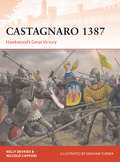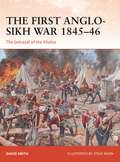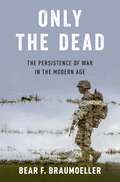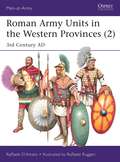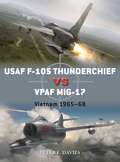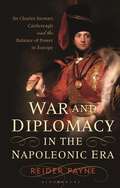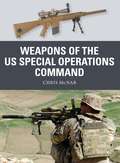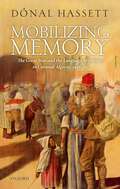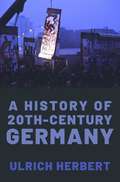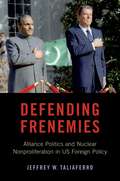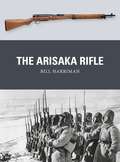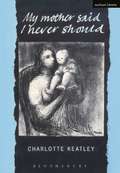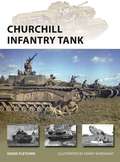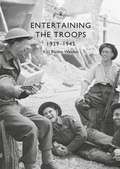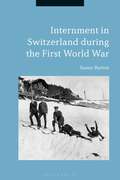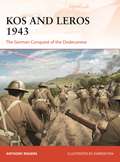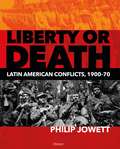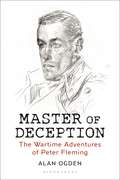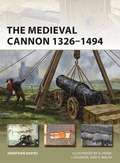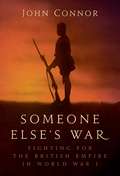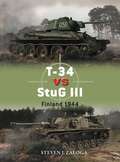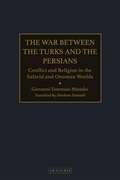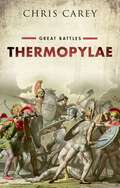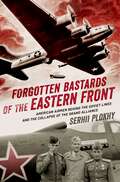- Table View
- List View
Castagnaro 1387: Hawkwood’s Great Victory (Campaign)
by Kelly DeVries Niccolò CapponiThe battle of Castagnaro, fought on 11 March 1387 between the Veronese and the Paduans, is one of the most famous Italian medieval conflicts in the English-speaking world. This is thanks in no small part to the exploits of the renowned English mercenary (or condottiero) captain, Sir John Hawkwood. Commanding the Paduan army, he led them to a stunning victory.This new study challenges the conventional story of the battle, relocating it to the other side of the Adige River, and showing that Hawkwood was no mere disciple of his previous commander, the Black Prince–he was a highly talented and intelligent general in his own right. Using specially commissioned full-colour artwork, this fascinating book shows how Hawkwood used his own acumen, and the training, skills, and discipline of his very experienced condottieri, to defeat his opponents at Castagnaro.
The First Anglo-Sikh War 1845–46: The betrayal of the Khalsa (Campaign)
by David SmithThe First Anglo-Sikh War broke out due to escalating tensions between the Sikh Empire and the British East India Company in the Punjab region of India in the mid-nineteenth century. Political machinations were at the heart of the conflict, with Sikh rulers fearing the growing power of their own army, while several prominent Sikh generals actively collaborated with the East India Company.The British faced a disciplined opponent, trained along European lines, which fielded armies numbering in the tens of thousands. The war featured a number of closely contested battles, with both sides taking heavy losses. This fully illustrated study of the First Anglo-Sikh War tells the story of one of the major colonial wars of the nineteenth century, as the East India Company attempted to wrest control of the Punjab region from a Sikh Empire riven by infighting.
Only the Dead: The Persistence of War in the Modern Age
by Bear F. BraumoellerThe idea that war is going out of style has become the conventional wisdom in recent years. But in Only the Dead, award-winning author Bear Braumoeller demonstrates that it shouldn't have. With a rare combination of historical expertise, statistical acumen, and accessible prose, Braumoeller shows that the evidence simply doesn't support the decline-of-war thesis propounded by scholars like Steven Pinker. He argues that the key to understanding trends in warfare lies, not in the spread of humanitarian values, but rather in the formation of international orders--sets of expectations about behavior that allow countries to work in concert, as they did in the Concert of Europe and have done in the postwar Western liberal order. With a nod toward the American sociologist Charles Tilly, who argued that "war made the state and the state made war," Braumoeller shows argues that the same is true of international orders: while they reduce conflict within their borders, they can also clash violently with one another, as the Western and communist orders did throughout the Cold War. Both highly readable and rigorous, Only the Dead offers a realistic assessment of humanity's quest to abolish warfare. While pessimists have been too quick to discount the successes of our attempts to reduce international conflict, optimists are prone to put too much faith in human nature. Reality lies somewhere in between: While the aspirations of humankind to govern its behavior with reason and justice have had shocking success in moderating the harsh dictates of realpolitik, the institutions that we have created to prevent war are unlikely to achieve anything like total success--as evidenced by the multitude of conflicts in recent decades. As the old adage advises us, only the dead have seen the end of war.
Roman Army Units in the Western Provinces: 3rd Century AD (Men-at-Arms)
by Raffaele D’AmatoThe appearance of Roman soldiers in the 3rd century AD has long been a matter of debate and uncertainty, largely thanks to the collapse of central control and perpetual civil war between the assassination of Severus Alexander in 235 and the accession of the great Diocletian in 284. During those years no fewer than 51 men were proclaimed as emperors, some lasting only a few days. Despite this apparent chaos, however, the garrisons of the Western Provinces held together, by means of localized organization and the recruitment of 'barbarians' to fill the ranks. They still constituted an army in being when Diocletian took over and began the widespread reforms that rebuilt the Empire – though an Empire that their forefathers would hardly have recognized. Fully illustrated with specially chosen colour plates, this book reveals the uniforms, equipment and deployments of Roman soldiers in the most chaotic years of the Empire.
USAF F-105 Thunderchief vs VPAF MiG-17: Vietnam 1965–68 (Duel)
by Peter E. DaviesThe F-105D Thunderchief was originally designed as a low-altitude nuclear strike aircraft, but the outbreak of the Vietnam War led to it being used instead as the USAF's primary conventional striker against the exceptionally well-defended targets in North Vietnam and Laos. F-105 crews conducted long-distance missions from bases in Thailand, refuelling in flight several times and carrying heavy external bombloads.The MiG-17 was the lightweight, highly manoeuvrable defending fighter it encountered most often in 1965–68 during Operation Rolling Thunder. A development of the MiG-15, which shocked UN forces during the Korean War, its emphasis was on simplicity and ease of maintenance in potentially primitive conditions.Fully illustrated with stunning artwork, this book shows how these two aircraft, totally different in design and purpose, fought in a series of duels that cost both sides dearly.
War and Diplomacy in the Napoleonic Era: Sir Charles Stewart, Castlereagh and the Balance of Power in Europe
by Reider PayneThe lives and careers of Sir Charles Stewart and his brother Lord Castlereagh take in a grand stage, from Britain and Ireland to the kingdoms and empires of western and central Europe. Throughout his life Stewart played a key role in shaping Europe: his is a Regency drama beyond anything imagined by Jane Austen: warfare, diplomacy, affairs, royal scandal, a romantic and brilliant marriage, and a brother's suicide. Stewart was at the heart of some of history's greatest events which took him from the bloodiest actions of the Napoleonic Wars to the palaces of Europe's ruling dynasties. For an all too brief period, Stewart blazed across the battlefields and chancelleries of Europe, enjoying a meteoric rise to the highest positions and influence, in a career indelibly linked to his brother's and one which is virtually unique. Stewart even found time to enjoy his share of scandal, from affairs and parties in Vienna to running a spy network which aimed to charge a Princess of Wales with adultery. Reider Payne's book is international in its scope and ambitions: with Stewart's military and diplomatic theatre of operations including Portugal, Spain, Prussia, Saxony, France, Austria and the Austrian territories in Italy. Stewart sat at the heart of the intrigues and social circles of Regency England, and his life story offers an unrivalled viewpoint into the competing claims and demands of Europe's courts.
Weapons of the US Special Operations Command (Weapon)
by Chris McNabThe units and formations of the US Special Operations Command (SOCOM) have privileged access to the finest weaponry in the world's arsenal. Whether Army, Navy, Air Force, or Marines, the SOCOM troops select weapons that match their mission requirements, but which also sit at the cutting edge of combat technology. This means that, while SOCOM troops frequently use standard-issue weaponry, they also adopt many specialist pieces of kit that are not so accessible to the broader armed services, including sniper rifles, battle rifles, and machine guns, as well as high-tech tactical accessories used to transform standard weaponry into something exceptional. Assessing the technology and capabilities of these combat weapons, as well as how they have been used in modern combat, this fully illustrated study lifts the veil on some of the most distinctive hand-held weapon systems of US special operations forces since 1987.
Bomber Boys on Screen: RAF Bomber Command in Film and Television Drama
by S. P. MacKenzieSince the Second World War, depictions of Royal Air Force operations in film and television drama have become so numerous that they make up a genre worthy of scholarly attention. In this illuminating study, S. P. MacKenzie explores the different ways in which the men of RAF Bomber Command have been represented in dramatic form on the big and small screen from the war years to the present day. Bomber Boys on Screen is the first in-depth study of how and why the screen-drama image of those who flew, those who directed them, and those who provided support for RAF bomber operations has changed over time, sometimes in contested circumstances.Until now dramas that focus on Bomber Command have tended to be mentioned only in passing or studied in isolation, despite the prevalence of surveys of both the British war film genre and of aviation cinema. In Bomber Boys on Screen MacKenzie examines the development, presentation, and reception of significant dramas on a decade-by-decade basis. Titles from the beginning of the war (The Lion Has Wings, 1939) to the start of new century (Bomber's Moon, 2014) are situated in the context of technical possibilities and limitations, evolving social and cultural norms in the United Kingdom and elsewhere, and the development of moral and utilitarian controversies surrounding the wartime bomber offensive directed against Nazi Germany. While the focus is on feature films and television plays, reference is also made to documentaries, memorials, veterans' organizations, book titles, war comics, and other representations of the war fought by Bomber Command.
Mobilizing Memory: The Great War and the Language of Politics in Colonial Algeria, 1918-1939
by Dónal HassettOver the course of the Great War, a quarter of million settlers and subjects from Algeria served in French forces. Thousands more crossed the Mediterranean to work in the war industries of metropolitan France. On the Algerian Home Front, men, women, and children of all ethnic, religious, social, and political backgrounds contributed to the imperial war effort. Mobilising Memory is the first study to explore how the mass mobilisation of Algerian society during the First World War transformed politics in the colony. It asks how actors across the colony's racial, ideological, and class divides sought to legitimise their competing visions for Algeria's future by evoking their wartime service. Without diminishing the coercive power of the colonial state, it stresses the agency of the citizens and subjects of Algeria who sought to leverage their contribution to the war to enhance their positions within colonial society. In doing so, Mobilising Memory explores the consequences, often unintended, of framing political, social, and economic demands in a language rooted in the experience of the Great War. It argues that the predominance of this shared political language - grounded in notions of loyalty to and sacrifice for France - meant that most actors in interwar Algeria sought not to break with the Empire but rather to renegotiate their place within it. While these efforts rarely proved successful, the volume demonstrates how they radically reshaped the practice of politics in the colony.
A History of Twentieth-Century Germany
by Ulrich HerbertGermany in the 20th century endured two world wars, a failed democracy, Hitler's dictatorship, the Holocaust, and a country divided for 40 years after World War II. But it has also boasted a strong welfare state, affluence, liberalization and globalization, a successful democracy, and the longest period of peace in European history. A History of Twentieth-Century Germany provides a survey of German history during a century of extremes. Ulrich Herbert sees German history in the 20th century as determined by two contradictory perspectives. On one hand, there are the world wars and great catastrophes that divide the country's history into two parts-before and after 1945. Germany is the birthplace of radical ideologies of the left and right and the only country in which each ideology became the foundation of government. This pattern left its stamp on both the first and second halves of the century. On the other hand, the rise of modern industrial society led to decades of conflict over the social and political order regardless of which political system was in force. Considering these contradictory developments, Herbert tackles the questions of both the collapse in the first half of the century and the development from a post-fascist, ruined society to one of the most stable liberal democracies in the world in the latter half. Herbert's analysis brings together wars and terror, utopia and politics, capitalism and the welfare state, socialism and liberal democratic society, gender and generations, culture and lifestyles, European integration and globalization. The resulting book sets a standard by which historians of the period will be measured in the future.
Defending Frenemies: Alliances, Politics, and Nuclear Nonproliferation in US Foreign Policy
by Jeffrey W. TaliaferroThe United States maintains defense ties with as many as 60 countries, which not only enables its armed forces to maintain command globally and to project its force widely, but also enables its government to exert leverage over allies' foreign policies and military strategies. In Defending Frenemies, Jeffrey W. Taliaferro presents a historical and comparative analysis of how successive US presidential administrations have employed inducements and coercive diplomacy toward Israel, Pakistan, South Korea, and Taiwan over nuclear proliferation. Taliaferro shows that the ultimate goals in each administration, from John F. Kennedy to George H. W. Bush, have been to contain the Soviet Union's influence in the Middle East and South Asia and to enlist China as an ally of convenience against the Soviets in East Asia. Policymakers' inclinations to pursue either accommodative strategies or coercive nonproliferation strategies toward allies have therefore been directly linked to these primary objectives. Defending Frenemies is sharp examination of how regional power dynamics and US domestic politics have shaped the nonproliferation strategies the US has pursued toward vulnerable and often obstreperous allies.
The Arisaka Rifle (Weapon)
by Bill HarrimanEntering service in 1897, the Arisaka family of bolt-action rifles armed Japanese troops and others through two world wars and many other conflicts, including the Russo-Japanese War of 1904–05. Issued in long and short versions – the latter for cavalry and specialists – the Type 30 was the first main Arisaka model, arming Imperial Japan's forces during the Russo-Japanese War, though after the war it was refined into the Type 38, which would still be in use in 1945. The main Arisaka rifle of World War II though was the Type 99. Lighter and more rugged than the US M1903 Springfield rifle it would face in the initial battles in the Pacific, it was produced in four main variants, including a sniping model and a take-down parachutist's rifle. Featuring full-colour artwork as well as archive and close-up photographs, this is the absorbing story of the rifles arming Imperial Japan's forces, from the trenches of Mukden in 1905 to the beaches of Okinawa 40 years later.
Bolt Action: Korea (Bolt Action #29)
by Warlord GamesBeginning in 1950, the Korean War was a defining moment for the UN and the entirety of the early Cold War, widening the already monumental gulf between the east and west, capitalist and communist. This supplement for Bolt Action expands the rules-set from its World War II roots to this new, and truly modern, conflict. Bolt Action: Korea contains all the rules, Theatre Lists, scenarios, and new and exciting units, never seen in Bolt Action before, to wargame this turbulent period of world history.
Churchill Infantry Tank (New Vanguard)
by David FletcherThe NVG covers all seven Marks of Churchill gun tank with variations and the curious self-propelled gun of 1941/42, but not the so-called 'Funnies' or the armoured recovery vehicle variants.It will begin with the prototype tank A20, which has not been covered in any detail before, then go on to look at all seven Marks of Churchill, in particular their different guns. This book will also look at the tank's service in Russia and later with the Irish, Jordanian and Australian Armies. It will also feature on the disastrous Dieppe raid of August 1942, ending with a brief look at the Black Prince or super Churchill which was only developed up to the prototype stage at the end of World War II.The Churchill is an interesting tank, quite different from any other British tank of World War II, built outside the normal process of British tanks and the Department of Tank Design. It was built under the watchful eye of the Prime Minister, after whom it was named, by a firm with no previous experience of tank production. Despite being condemned as unsuitable and more than once being scheduled to be replaced by a better design this never actually happened. It remained in production and ultimately vindicated itself since, although it was slow and noisy it was found to have superior climbing ability and thicker frontal armour than the vaunted German Tiger.Its classification as an Infantry Tank has been extensively criticised although recently one or two authors, notably Americans, seem to have revised their views on this and even Field Marshal Montgomery, who advocated a Universal Tank to fulfil all roles, found the Churchill a useful tank on many occasions, particularly considering its ability to absorb punishment.
Entertaining the Troops: 1939–1945 (Shire Library)
by Kiri Bloom WaldenThis book explores the foundation and work of the Entertainments National Service Association (ENSA) and other entertainment organisations such as CEMA and Stars in Battledress. These organisations ensured that troops in all theatres of the Second World War were visited by big bands, ballet stars, Shakespearian actors and the most famous popular entertainers of the day in order to raise morale. Many of Britain's biggest stars cut their teeth performing on makeshift stages to homesick soldiers, sailors and airmen and women during the war years, with famous performers including Laurence Olivier, Gracie Fields, George Formby, Vera Lynn, Margot Fonteyn and members of The Goons. This book also details the alternative arrangements made when the entertainment organisations couldn't come – the forces often put on their own shows, with pantomimes and plays written and performed by POWs being a prime example.
Internment in Switzerland during the First World War
by Susan BartonIn contrast to the plethora of works focusing on the tragic loss of human lives during the First World War, little is known about the more hopeful realities of thousands of prisoners of war from Britain, France, Germany and Belgium who were sent to Switzerland from 1916. This book explores the everyday lives of these prisoners and their impact on Switzerland. Internees were warmly welcomed by local people and given education, training and employment. Leading relatively free lives, they were able to engage in leisure activities and develop new relationships. However, they also contributed to the country's economy, helping to keep Swiss tourism alive at a time when businesses were struggling and alleviating Switzerland's labour shortage as Swiss men were called-up to defend their borders and preserve the country's neutrality. Drawing on a wide range of sources from official records to magazines and postcards, Susan Barton provides an absorbing account of the social and cultural history of internment in Switzerland.
Kos and Leros 1943: The German Conquest of the Dodecanese (Campaign)
by Anthony RogersThis title is an illustrated account of the autumn 1943 battle for the Dodecanese, as Winston Churchill attempted to secure the Aegean islands in the wake of the Italian armistice. The occupation was a gamble intended to increase pressure against Germany and at the same time possibly provide encouragement for Turkey to join the Allies. Spearheaded by the Special Boat Squadron and the Long Range Desert Group, garrison troops were deployed to the Italian-occupied Dodecanese, but they were too late to prevent the Germans from taking control of the key island of Rhodes and its all-important airfields. An all-out German offensive followed. Air force and naval units supported a series of assaults by infantry and paratroopers, including specialist forces of the Division Brandenburg. Within three months, only Castelorizzo was still in British hands. Rhodes, Kos and Leros remained under German occupation until May 1945 and the end of the war in Europe. The Dodecanese would be Adolf Hitler's last enduring victory – and the last enduring British-led defeat.
Liberty or Death: Latin American Conflicts, 1900–70
by Philip JowettFrom the Banana Wars of the early 20th century through to the Football War of 1969, South and Central America has been a hotbed of revolutions, rebellions and conflicts as diverse as they are numerous. Some were small-scale affairs involving the poorly armed forces of Central American armies with rifles, machetes and a few aged machine guns. Others were full-scale conflicts involving sophisticated armies equipped with tanks, artillery and aircraft, and hundreds of thousands of troops. These wars often went largely unreported in the West, which was preoccupied with its own problems in fighting two world wars and dealing with Cold War tensions.Fully illustrated with a wealth of rare photographs, this fascinating story sheds light on seven decades of a continent in conflict that is rarely covered in English.
Master of Deception: The Wartime Adventures of Peter Fleming
by Alan OgdenMaster of Deception is a biography of Peter Fleming, elder brother of Ian Fleming, creator of James Bond. Peter Fleming worked as a travel writer and journalist, serving with distinction throughout World War II and played a crucial role in British intelligence operations in the Far East. This biography ranges from the personal life of Fleming such as his marriage to Celia Johnson, a famous actor of the time, to his extensive military intelligence career which took him from Norway and Greece to the Far East. Framed through the life of Peter Fleming this book offers an in-depth study of British intelligence operations in the Far East during World War II.
The Medieval Cannon 1326–1494: The Artillery That Transformed European Warfare (New Vanguard)
by Jonathan DaviesThe first illustration of a cannon in Europe can be dated quite precisely to 1326. This book explores the development of gunpowder, the earliest appearance of cast-bronze cannon in Western Europe, followed by the design and development of the wrought-iron cannon. The wrought-iron hoop-and-stave method of barrel construction was a system that came to dominate medieval artillery design both large and small until the end of the 15th century, and saw the cannon used not only as a prestige weapon, but start to be used as a practical and terrifying weapon on the medieval battlefield. In 1453, the Ottomans' conquest of Constantinople, with their extensive artillery, marked the triumph of medieval firepower. The book will focus on the technology and tactics of early European artillery on both sea and land, and assess its impact on medieval warfare.
Someone Else’s War: Fighting for the British Empire in World War I
by John ConnorWorld War I was the first truly global conflict and its effects were felt across the British Empire. When war broke out in 1914, Great Britain had the largest empire, encompassing one quarter of the population of the world. Many colonial citizens were to be enlisted into the war effort and shipped from their homes in Africa, Asia and Australasia to fight on the battlefields of the Western Front. What was the experience of war like for citizens of empire, whether combatants or not? How did the empire affect countries administered by Great Britain but geographically located tens of thousands of miles from the conflict? In this book, John Connor tells the story of the people whose lives were profoundly affected by 'someone else's war' – dragged, against their will, into a geopolitical conflict vastly removed from their normal lives.
T-34 vs StuG III: Finland 1944 (Duel)
by Steven J. ZalogaIn the summer of 1944, the Red Army staged a massive armoured assault up the Karelian Isthmus with the intent of eliminating any remaining German and Finnish forces facing the Leningrad region. Most of the Soviet units sent into Finland were new to the region, moving mainly from the fighting in the Leningrad area. As a result, some had the latest types of Soviet equipment including the new T-34-85 tank, fielded alongside the older T-34-76. Germany refused to sell the Finns new tanks without a reinforced military alliance, but in 1943 began selling them a few dozen StuG III assault guns. This made the StuG III battalion the most modern and powerful element of the Finnish armoured division, and it saw very extensive combat in the June–July summer battles. Featuring specially commissioned artwork and an array of archive photographs, this is the absorbing story of the parts played by Soviet and Finnish armour in the epic battles in Finland during June and July 1944.
The War Between the Turks and the Persians: Conflict and Religion in the Safavid and Ottoman Worlds
by Giovanni-Tommaso MinadoiThe Ottoman–Safavid conflict was viewed by the countries of Europe as being beneficial to their interests and there was therefore a subsequent hunger for up-to-date intelligence of events in that part of the world. As resident physician to the Venetian legation, Giovanni-Tommaso Minadoi he made use of his wide contacts within the community to gather this vital commercial and diplomatic intelligence. This book provides a detailed and lively account of the war between the Ottoman and Safavid dynasties in the late sixteenth century, when Ottoman sultan, Murad III, sought to extend his sphere of influence at the expense of the Safavids under Shah Mohammad Khodabandeh. There are very few western accounts of the conflict and Minadoi's is both highly informative and reliable and provides a valuable addition to non-western sources. Now rare, this edition is published with a new introduction from one of the foremost authorities on the history of Iran, Rudi Matthee.
Thermopylae: Great Battles (Great Battles)
by Chris CareyThe story of Thermopylae, the battle that helped define the identity of the ancient Greeks: how it was fought, how it has been remembered, and what it means for us today. During the Battle of Thermopylae in 480 BC, a Greek force of approximately 7,000 faced the biggest army ever seen in the Greek peninsula. For three days, the Persians—the greatest military force in the world—were stopped in their tracks by a vastly inferior force, before the bulk of the Greek army was forced to retreat with their rear guard wiped out in one of history's most famous last stands. In strict military terms it was a defeat for the Greeks. But like the British retreat from Dunkirk or the massacre at the Alamo, this David and Goliath story has taken on the aura of success. Thermopylae has acquired a glamour exceeding the other battles of the Persian Wars, passing from history into myth, and lost none of that appeal in the modern era. In Thermopylae, Chris Carey analyses the origins and course of this pivotal battle, as well as the challenges facing the historians who attempt to separate fact from myth and make sense of an event with an absence of hard evidence. Carey also considers Thermopylae's cultural legacy, from its absorbtion into Greek and Roman oratorical traditions, to its influence over modern literature, poetry, public monuments, and mainstream Hollywood movies. This new volume in the Great Battles series offers an innovative view of a battle whose legacy has overtaken its real life practical outcomes, but which showed that a seemingly unstoppable force could be resisted.
Forgotten Bastards of the Eastern Front: American Airmen behind the Soviet Lines and the Collapse of the Grand Alliance
by Serhii PlokhyThe full story of the first and only time American and Soviets fought side-by-side in World War II At the conference held in in Moscow in October 1943, American officials proposed to their Soviet allies a new operation in the effort to defeat Nazi Germany. The Normandy Invasion was already in the works; what American officials were suggesting until then was a second air front: the US Air Force would establish bases in Soviet-controlled territory, in order to "shuttle-bomb" the Germans from the Eastern front. For all that he had been pushing for the United States and Great Britain to do more to help the war effort--the Soviets were bearing by far the heaviest burden in terms of casualties--Stalin, recalling the presence of foreign troops during the Russian Revolution, balked at the suggestion of foreign soldiers on Soviet soil. His concern was that they would spy on his regime, and it would be difficult to get rid of them afterword. Eventually in early 1944, Stalin was persuaded to give in, and Operation Baseball and then Frantic were initiated. B-17 Flying Fortresses were flown from bases in Italy to the Poltava region in Ukraine. As Plokhy's book shows, what happened on these airbases mirrors the nature of the Grand Alliance itself. While both sides were fighting for the same goal, Germany's unconditional surrender, differences arose that no common purpose could overcome. Soviet secret policeman watched over the operations, shadowing every move, and eventually trying to prevent fraternization between American servicemen and local women. A catastrophic air raid by the Germans revealed the limitations of Soviet air defenses. Relations soured and the operations went south. Indeed, the story of the American bases foreshadowed the eventual collapse of the Grand Alliance and the start of the Cold War. Using previously inaccessible archives, Forgotten Bastards offers a bottom-up history of the Grand Alliance, showing how it first began to fray on the airfields of World War II.
